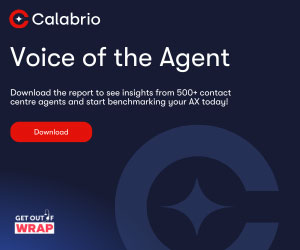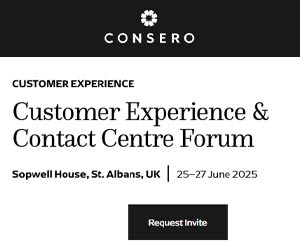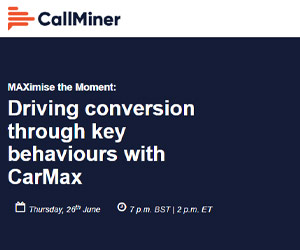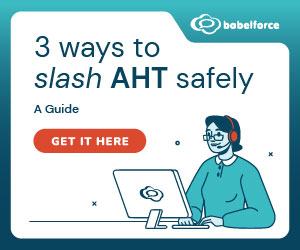The Technology Exists to Transform the Customer Experience
In his latest post Don Peppers shares his experience of attending the Mobile World Congress in Barcelona. Given my recent experiences as a customer, the following words particularly resonate with me (bolding mine):
“At virtually every booth, at every significant exhibit, the message was about how to use each of these new technologies or product offerings to deliver a better customer experience. To interact faster or more efficiently with customers. To provide what customers need in a more effective manner. To deliver better, more reliable service, less expensively and more flexibly.
And this didn’t seem out of place to me at all, because the customer-experience revolution is being powered by technological change. It’s always been a good thing for businesses to be customer-oriented, but it’s only within the last twenty years or so that technology has made it economically possible to be customer-centric, at scale.”
I want to pick up this theme and illustrate it through two of my recent experiences. One with a public sector organisation (The Passport Office, UK) and Churchill (car, home, travel, life insurer). Which one is making effective use of technology to transform the customer experience?
What Kind of A Customer Experience Does The Passport Office Enable-Deliver?
1. My Experience Fifteen Years Ago
The last time I put in an application to renew my passport was fifteen years ago: 1990. I remember it being a painful process. First, I made my way to the local Post Office branch. Then queue up for some 10 minutes, finally only to be told that the branch had run out of passport renewal forms. This meant getting into my car and travelling to the main Post Office branch in the town centre. This required a ten-minute journey, the hassle of finding a car park, paying car park charges. Waiting even longer – something like 20 minutes – to get hold of the requisite form. Whilst I was in town, I took the opportunity to get passport photos made.
Once I had the paperwork and photos, I returned home. After I had completed the paperwork, I had to write a long declaration in tiny writing on the back of several photos (of me). Then I phoned my doctor’s surgery requesting my doctor to sign two of these photos to declare that they represented my likeness. I was told that the doctor would charge a fee of £40. So the next day I took the fee and the photos and left them with the receptionist at the doctor’s surgery. I was told that the photos would be available for collection in two days.
A week or so later, I remembered the photos so I made my way back to the doctor’s surgery to pick up the photos. As the surgery was busy I had to wait something like five minutes to ask for the photos, only to find that they had not been signed! After another couple of days I got hold of the signed photos. Then I put all the material together, took it to the Post Office and sent it away ‘special delivery’. About four weeks later, I received my new passport.
2. My Experience This Time Around
I had been aware for months that my passport would run out in Feb2015. I also knew I needed a passport to travel – for work, with the family on holidays. Yet, I could not get myself to start the renewal process – except for getting the passport photos made. Why? The memory of the previous experience was fresh in my mind. I was totally convinced that it was going to be a long drawn-out effort (hassle) to get my new passport.
One day I decided to take on the challenge. This time I did not go to the local Post Office branch. I opened up my laptop and typed “UK passport renewal online” into Google. To my delight, I shortly found myself on the http://www.gov.uk website presented with easy to understand wizard/directions. By following the online process, within four minutes I had filled in the requisite screens, selected various options, paid the fee through credit card, and printed out the requisite paperwork.
I checked over the paperwork. Then I attached two passport photos – this time I was not required to get the photos attested by my doctor. I added in my expired passport, sealed everything up in an envelope, and walked to the local Post Office branch. At the branch, I paid the requisite fee for ‘special delivery’. I experienced ease and marvelled at how easy it had been this time around.
Just a week into the process, I got an automated message from The Passport Office telling me something like “Your passport is being printed right now. And will be with you in a couple of days.” I found myself surprised and delighted. Why? The Passport Office had used technology to make the application process easy and quick. Now The Passport Office was using technology to keep me up to date with progress – just at the right moment, the moment my passport was being printed. Wow! How clued in, how customer-centric, is The Passport Office.
The Passport Office went on to keep its promise. I received my new passport within the promised two days. It had taken a total of 8 working days to get a new passport office issued. And the most effort had involved going into the town centre and getting the photos taken. A total contrast with fifteen years ago.
Now that is how to make good use of technology to get the customer from where he finds himself (current situation) to where he wishes to be (desired outcome) easily, quickly, intelligently. And cut out unnecessary costs – for both the customer and The Passport Office. So I acknowledge and thank the folks that have thought things through and transformed the process of renewing a British passport through the smart use of digital technologies. Great work! It is the kind of work that I’d be proud to do myself as a digital strategist and CX designer.
What Kind of a Customer Experience Does Churchill Deliver?
Recently, I had to contact Churchill to ask how many years of no claims my wife has. So I phoned Churchill and after a couple of minutes I found myself talking to a helpful call-centre agent. She gave me the answer. Then I told her that I needed that in writing. She told me to wait whilst she triggered the necessary paperwork, and assured me that the no claims certificate would be with me in five days.
The no claims certificate did not arrive as promised. And my wife started pestering me as her car insurer was pestering her to provide it – else her insurance policy would be cancelled.
So I rang Churchill again. Another helpful call-centre agent took my call. I explained the situation and the importance of getting the no claims certificate asap. I requested that she email it to me. She told me that she was not in a position to do that. She did not have access to email. All she could do was request (in her system) for the certificate to be printed and mailed to me. That is not the answer I was looking for. The end result was that I had to be patient and wait to receive the certificate in the post.
Has anything substantial changed in regards to customer’s post sales interaction with insurance companies? I am tempted to say, little – at best. Fifteen years ago, I called up insurers to get my post sales needs met. I did the same this year. Fifteen years ago I had to wait for five to ten days to get paperwork in the mail. This time, 2015, it is the same.
Why has Churchill not made effective use of digital technologies – to make things easier, to minimise the cycle time, to cut out unnecessary costs, to deliver a customer experience that leaves their customers grateful that they are doing business with Churchill?
The technology exists to create a online self-service portal. The technology exists to allow customers to make requests through this portal. The technology exists to take these requests and convert them to cases for call-centre agents to review-execute. The technology exists to cut-out call-centre agents out of simple processes and get simple requests actioned by the system itself. The technology exists to create documents and send them out through email. The technology exists to keep customers informed – to track the progress of their requests…. Is Churchill using any of this technology? No! Why not?
Summing Up: Why The Customer Experience Sucks Most Of The Time For Most Organisations
I will allow Don Peppers (who, along with Martha Rogers, deserve the label thought leader) to sum up the situation at hand:
“The technology part gets faster-better-cheaper every year, but this just throws into stark relief how difficult it really is, as a business, to take the customer’s point of view, and to organize yourself to deliver a superior customer experience, across the firm. The vast majority of companies have a great deal of difficulty with this task, even with all the digital technology now available.”
Why do the vast majority of companies have such great difficulty? Don sums this up, beautifully:
“At its core, for a firm to improve its customer experience it must minimize the friction in the experience. It has to remove obstacles, eliminate problems, and streamline processes. But the overwhelming majority of companies just aren’t organized to do this. Instead, as a first priority, companies organize themselves to minimize the friction in their production process.”
Of course this begs the question: Why aren’t the Tops who run these companies reorganising the way their companies work? It occurs to me that if the caterpillar had the kind of intelligence that we have it is highly likely that s/he would think the idea of ‘butterfly’ was a great one. And when it came to taking action – to going through the transformation process – the caterpillar would choose to stay as a caterpillar. And take the easier route of adding one or more colours to its caterpillar body. Our gift of foresight-imagination is both a blessing and a curse.
I thank you for your listening. For my part, I am delighted to be in a position where I can share my speaking with you. I look forward to listening to that which you share.
Author: Guest Author
Published On: 20th Mar 2015 - Last modified: 3rd Nov 2017
Read more about - Archived Content


























